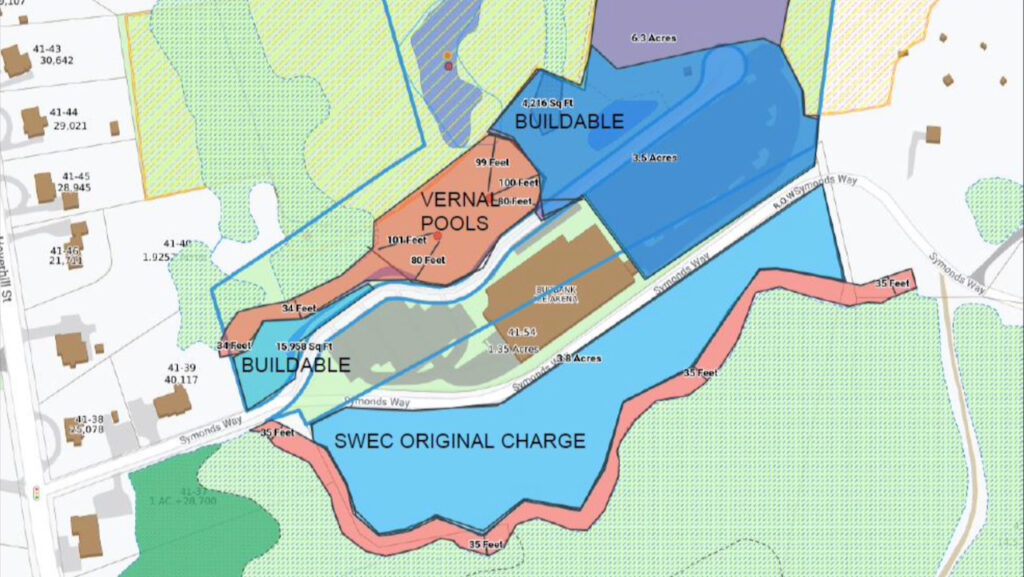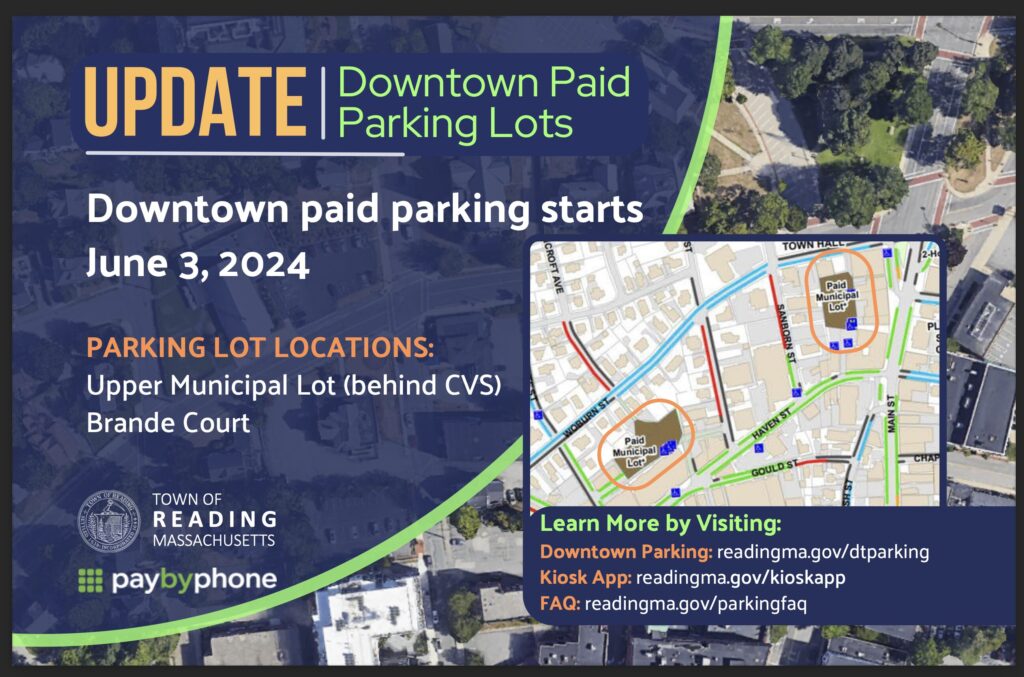SWEC Presentation and Discussion

Reading, MA — After almost two years of discussion and public input, the Symonds Way Exploratory Committee (SWEC) offered a tiered system of suggestions for the possible use of the town-owned land that sits next to the Burbank Ice Arena on Symonds Way. The property, known as the Zanni property, was purchased by the town in 2019. It consists of fifteen acres of primarily wetland property but includes two and a half acres of land directly next to Symonds Way, which is considered buildable land.
SWEC Vice Chair Chuck Robinson explained that the committee formed basic criteria for evaluating ideas for potential uses of the property, including intergenerational benefit, meeting demonstrated need, maintaining town ownership, and fiscal responsibility. After public surveys, input, and a SWEC discussion, it was determined that the best use of the property would be some form of recreational use.
swec-presentation-5-24With this foundation, SWEC offered five tiers of possibilities for the property. The first “just a little” plan is for developing multi-purpose fields and pickleball courts on the site. The second “just a bit more” tier would add a senior/community center to the property. The third tier proposes renegotiating the lease with the ice arena authority and folding the land behind the ice arena into the mix for the pickleball courts. The fourth “do a lot” tier would build a multi-use recreational facility and pickleball courts behind the ice arena, use the “Zanni” portion for parking, and develop a public/private partnership with a management company. The final “do it all” option would seek to use the entire area to meet a wide range of needs, including pickleball and a dog park.
Robinson stated that the next step is for the Select Board to determine its short—and long-term priorities for the land, possibly seeking grants and participating with stakeholder groups. “We always like groups that are willing to put skin in the game,” Robinson stated.
No timetable is set for further discussions.
FY25 Water & Sewer Rates

Matt Abrahams of the Abrahams Group presented the board with water and sewer rate options. Abrahams noted that both the water and sewer enterprise funds are in healthy positions, with the water fund having a retained earnings balance of 58.5% of the fund expenses and the sewer enterprise fund having a retained earnings balance of 99.1% of the fund expenses. A thirty percent balance is the minimum recommended amount for these funds. He then presented a series of charts that indicated that based on expected capital outlays from these enterprise funds over the next ten years, the board will have to consider how it uses the enterprise funds to ensure rate stabilization as it sets rates.
Abrahams also analyzed how the new tiered rate system affects large multi-unit residential buildings in town. The town meeting requested this analysis through an instructional motion last November. As currently composed, these buildings are treated as one unit to determine the tier, which places most in the highest tier and thus at the highest rate. Several residents stated during public comment that they believe this is an inequitable choice.
“Adopt a billing system that treats all residents fairly,” resident Cathy Zeek urged.
Abrahams’s research indicated that 84.6% of ratepayers in large multi-unit buildings are paying water and sewer rates in the highest tier when averaged by unit. If these same units were billed individually, 87.6% would only be in tier one, and none would be in tier four.
However, Abrahams did note that given the small difference in rates between the highest and lowest tier, which is only $1.75, if the billing process were to change, a building such as the Postmark building would see a total savings of $2,038. Divided between the fifty residential units in the building, this is a savings of $40.76 per unit annually.
The Select Board is scheduled to discuss and vote on water and sewer rates in June.
Parking Kiosk Update

Director of Community Development Andrew MacNichol reported that parking kiosks in the lower and upper Haven Street municipal parking lots will be installed in May and go live in June. A public awareness campaign has started with residents and businesses. Select Board member Christopher Haley emphasized that the kiosks are not designed for revenue generation but rather to create turnover in the downtown lots and support the businesses.
MacNichol reminded the board that under the new system, the first hour in the lots will be free; between one and four hours will be $1 an hour, and four hours and more will be $5 an hour. The kiosks will accept payment using coins, credit cards, or an online application. As the kiosk rollout occurs, Deputy Police Chief Christine Amendola suggested that officers could be made available to explain the system to those using the lots.
Liquor License Alteration
By a 4-0 vote, the Select Board approved a liquor license alteration for City Wine Spirits and Smoke Shop at 345 Main Street, which is looking to expand its business into the space adjacent to it. The board also voted 4-0 to approve two traffic amendments placing two new stop signs in town. One is at the intersection of Sanborn Street and Haven Street, and the other is at the intersection of Walnut Street and Summer Avenue. The board voted 4-0 to proclaim May 19-25 as Public Works Week in the Town of Reading.
Conservation Restriction & Collective Bargaining
The board approved a conservation restriction for “lot four” on Grove Street by a vote of 4-0. The Conservation Commission requested this restriction. After an executive session, Haley reported that the board voted 3-0 to approve a contract with the union representing the town engineers.
The Select Board adjourned at 9:10 pm.
